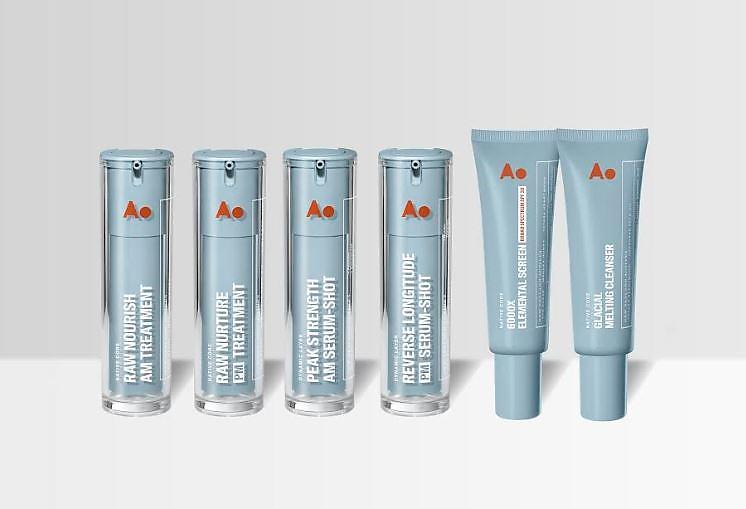Raw Skin Care: New Zealand Dermatologist & Ao Founder Dr. Mark Gray Explains the Benefits of Cold Pressing by Belinda Lichty Clarke

One of the newest trends in skin care is what’s referred to as "raw" skin care, which, put simply, means the products have not been heated beyond room temperature at any stage of production. I talked to Harvard-trained pathologist and dermatologist Dr. Mark Gray about how cold processing works and his New Zealand natural skin-care line, Ao.
Q. Can you talk briefly about the benefits of cold processing when creating skin-care products?
We use a proprietary cold-processing method of manufacture to create formulas with very little surfactants or emulsifiers. Raw or cold process emulsification allows for the development of robust formulas with increased potency and effectiveness of the active ingredients.
Think of it as raw versus overcooked vegetables. In this metaphor, we all know about the benefits of raw vegetables retaining their nutrients and potency. Likewise, traditional manufacturing processes overcook delicate raw ingredients, which results in less effective skin-care products.
Traditional skin-care manufacturing relies on emulsification to bind oil and water-based ingredients and hold them in that state for the lifetime of the product. This involves heating all ingredients to almost boiling point – that’s over 198 degrees F – at various phases of the manufacturing cycle, which can be up to 24 hours.
The problem with emulsification is particularly evident when you consider the delicate nature of the ingredients used in cosmeceuticals and high-end skincare formulations. High-temperature water or steam can damage heat sensitive actives like retinoids and proteins, and prolonged heating of oxygen.
Q. What was your inspiration for the line and do you have a company "mantra" that you follow?
My two decades of practice as a dermatologist highlighted two clear struggles among most of my patients: effective ingredients that are harmful and natural ingredients that don’t deliver results. I wanted to bridge this gap between health and efficacy and develop skin-care formulas that actually help people attain optimal skin health.
Ao challenges people to think about their skin in a new radical way. Instead of addressing the symptoms of the problem, I like to treat skin as a responsive organ that adapts and evolves with environmental and physical changes. My approach to skin care enhances the body’s responses so skin can protect and defend itself naturally.
Q. How do you incorporate New Zealand natural ingredients into your products and what makes these native ingredients unique?
The New Zealand wild is one of the world’s most unique and unpolluted environments, where native plant species have evolved and diversified in geographic isolation over tens of millions of years. More than 10,000 protected areas cover almost a third of the country, safeguarding stunning scenery, important ecosystems and places of historic and scientific value.
It's a wild and fresh environment with species found nowhere else on earth. Our ingredients are pure and potent, and sustainably harvested with great care for the wilderness. Some include:
- Heartwood: New Zealand totarol, a naturally occurring, sustainably sourced extract from the heartwood of the native New Zealand totara tree.
- New Zealand Red Algae (Astaxanthin): A powerful antioxidant.
- Kiwi Seed Oil: Extracted from the seeds of the kiwifruit, this potent oil contains more than 60 percent alpha linolenic acid (omega 3, ALA).
- Mānuka Honey: The dark, rich honey that bees produce from the Mānuka flowers contains extremely high levels of methylglyoxal, which helps promote rapid tissue repair.
- Harakeke Seed Oil: Extracted from the New Zealand native flax, it naturally soothes, hydrates and cools, reducing puffiness and redness.
Q. Is there a special way to store the products?
All of the products are stored in airless pump containers or tubes to reduce unnecessary oxidation that is caused by exposure to air. This helps to preserve the delicate cold processed formulas for longer. Airless containers have a diaphragm, instead of a dip tube, that rises to evacuate the product. Depressing the pump creates a vacuum effect that draws the product upwards. This type of packaging prevents contamination and oxidation as well as minimizing formula waste.
Take 30 seconds and join the 30Seconds community. Inspire and be inspired.
Related Products on Amazon We Think You May Like:
30Second Mobile, Inc. is a participant in the Amazon Services LLC Associates Program, an affiliate advertising program designed to provide a means for us to earn fees by linking to Amazon.com and affiliated sites.











join discussion